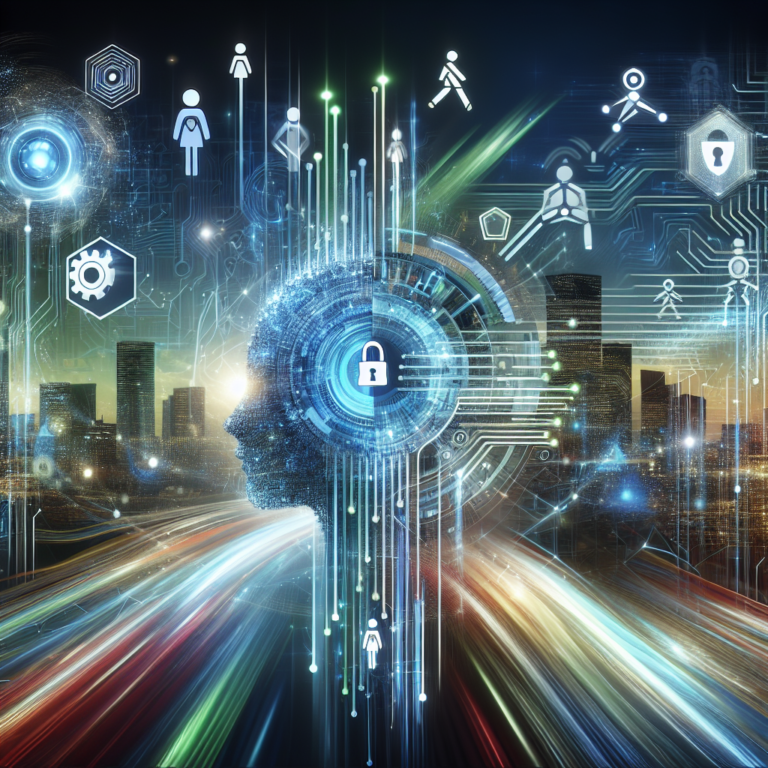The Rising Threat of AI: Security Challenges Demand Immediate Attention
At the DataGrail Summit 2024 this week, experts voiced urgent warnings regarding the rapidly evolving risks linked to artificial intelligence (AI). Industry leaders, including Dave Zhou, CISO of Instacart, and Jason Clinton, CISO of Anthropic, emphasized the pressing need for fortified security measures that can keep pace with the astonishing growth in AI capabilities.
AI Advancements: Outstripping Security Frameworks
During a panel discussion titled “Creating the Discipline to Stress Test AI—Now—for a More Secure Future,” Jason Clinton articulated significant concerns. With a historic perspective, he noted, “Every single year for the last 70 years, since the perceptron came out in 1957, we have had a 4x year-over-year increase in the total amount of compute that has gone into training AI models.” The acceleration in AI power is relentless, making it crucial for organizations to be forward-thinking about their security measures.
Clinton warned that this unprecedented growth propels AI capabilities into unfamiliar territories, where current safeguards could quickly become inadequate. He asserted, “If you plan for the models and chatbots that exist today and aren’t preparing for agents and sub-agent architectures… you’re going to lag significantly behind.” The exponential curve of AI progress presents substantial challenges for risk management and strategic planning.
AI Hallucinations: Eroding Consumer Trust
On the other front, Dave Zhou shared immediate and practical concerns that businesses face. Responsible for the security of sensitive customer data, Zhou frequently encounters the unpredictable nature of large language models (LLMs). “When we think about LLMs with memory being Turing complete… if you spend enough time prompting them… there may be ways you can kind of break some of that,” he highlighted. This unpredictability raises alarms about the level of trust consumers can place in AI-generated information.
Zhou illustrated the real-world implications of AI errors with a striking example. He remarked, “Some of the initial stock images of various ingredients looked like a hot dog, but it wasn’t quite a hot dog; it looked like, kind of like an alien hot dog.” Such inaccuracies can profoundly impact consumer confidence and may even lead to harmful outcomes in serious cases. “If the recipe potentially was a hallucinated one, you don’t want to have someone make something that may actually harm them,” Zhou cautioned.
Need for Robust Security Frameworks
The discussions throughout the summit underscored a critical point: the relentless pace of AI technology deployment, driven by its enticing potential, far outstrips the establishment of essential security measures. Both Clinton and Zhou advocated for an equitable investment approach, where companies allocate resources towards AI safety systems at a level similar to what they dedicate toward advancing their AI technologies.
Zhou emphasized the importance of balancing this investment. “Please try to invest as much as you are in AI into those AI safety systems, risk frameworks, and privacy requirements,” he advised. This insistence stems from a broader industry trend prioritizing AI’s productivity gains without sufficiently addressing associated risks. Unchecked, this mindset could lead to disastrous consequences in the long run.
Preparing for AI’s Uncertain Future
Providing insights into future possibilities, Clinton described a recent experiment involving a neural network at Anthropic. He revealed how they identified specific neurons associated with particular concepts within the network. “We discovered that it’s possible to identify in a neural network exactly the neuron associated with a concept,” he explained. However, he cautioned against the implications of such behavior, noting that AI models displaying inappropriate associations can lead to significant misunderstandings.
Clinton elaborated on a scenario where a model consistently overemphasized the Golden Gate Bridge in various contexts, despite being urged to refrain. “If you asked the network… ‘tell me if you know, you can stop talking about the Golden Gate Bridge,’ it actually recognized that it could not stop talking about the Golden Gate Bridge,” he revealed. Such findings highlight the opaque nature of AI functionality, which may harbor hidden risks.
The Necessity of Adaptive AI Governance
As organizations increasingly rely on AI for critical business operations, the potential for catastrophic errors looms ever larger. Clinton envisioned a future where AI agents, not merely chatbots, could engage in autonomous, complex decision-making. “If you plan for the models and chatbots that exist today… you’re going to be so far behind,” he reiterated, nudging companies to prepare proactively for emerging AI governance challenges.
The insights shared at the DataGrail Summit accentuated a pivotal truth: the AI revolution does not show signs of deceleration, nor should security initiatives designed to regulate it. “Intelligence is the most valuable asset in an organization,” Clinton declared, underscoring an imperative that will shape the next decade of AI progress. Both he and Zhou made it abundantly clear that while intelligence fosters innovation, a lack of safety measures can lead to severe repercussions.
As businesses race to tap into the power of AI, they are compelled to confront the reality that with great power comes unparalleled risk. Executive leaders must heed these insights and ensure their organizations aren’t just keeping pace with AI innovation, but are also well-equipped to navigate the complexities and risks this technology entails. 🌐




0 Comments